
The national parks and monuments of the United States have been called the world’s most magnificent rock collection for good reason. Of the National Park Service’s 189 national parks and monuments, most have geologic features that are described either as “significant” or “spectacular.”
Each year, these remarkable landforms—deep gorges, sheer cliffs, steaming hot springs and geysers, massive sand dunes, volcanic cones and flows, natural bridges, glaciers, stalactite-decorated caves, and colorful stone spires—attract hundreds of millions of visitors. And for those interested in geology, the time to visit the national parks and monuments has never been better, thanks to updated and upgraded geologic explanations.
Historically, geology had long taken a backseat to the parks’ more obvious attractions of scenery and wildlife. But in the 1950s and 1960s, growing numbers of visitors began showing interest in the earth sciences, especially geology. In the early 1990s, the National Park Service began rethinking the role of geology as an attraction. Since then, it has placed greater emphasis on geologic education—in other words, on the science behind the scenery.
AWE-INSPIRING GEOLOGY
Today’s visitors still marvel at the landforms for which the national parks and monuments are famous. But now, more detailed exhibits, improved interpretive signage, and focused ranger programs and lectures make it easier for visitors to learn about the geologic forces that created these remarkable landforms.
The landforms in the national parks and monuments were created by five basic geologic processes: sandstone erosion, volcanics, groundwater dissolution and redeposition, glaciation, and mountain building and faulting.
This story is from the June 2021 edition of Rock&Gem Magazine.
Start your 7-day Magzter GOLD free trial to access thousands of curated premium stories, and 8,500+ magazines and newspapers.
Already a subscriber ? Sign In
This story is from the June 2021 edition of Rock&Gem Magazine.
Start your 7-day Magzter GOLD free trial to access thousands of curated premium stories, and 8,500+ magazines and newspapers.
Already a subscriber? Sign In
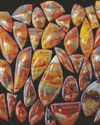
MORGAN HILL POPPY JASPER
In California, there are very few places to collect semi-precious stones. Many locations from the past have been either exhausted of the material or the land has been developed.
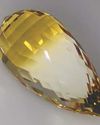
THE ACORN
The briolette gemstone has the same design attributes of a regular gemstone, however, the pavilion is elongated and the crown is usually domed. This is perfect for an elegant pendant, earrings or a pendulum.
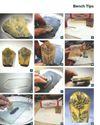
HOW TO PUT A PROTECTIVE CAP ON A CAB
To protect a specimen cab, often a cap is needed. In my case, I had a slab with the because of the color of the background and the pattern. This background had a more silicified consistency than most sandstones. It had no graininess like most sandstone, so I'm inclined to compare it to a jasper. The pattern was typical of a dendrite.

The Resilient Revival of Anne Brontë & Her Stones
For the first time, the Anne Brontë rock collection underwent complete description and identification, and along with Professor Hazel Hutchison of Leeds University and Dr. Enrique Lozano Diz at ELODIZ (a company specializing in spectroscopy analysis), an analysis of that collaboration, Anne Brontë and Geology: A Study of her Collection of Stones, was published in April 2022 in Volume 47, Issue 2 of the peer-reviewed journal, Brontë Studies & Gazette.\"

Amazing Women with Rock-Solid Careers
Explorers, Geologists, Educators & Jewelry Makers...
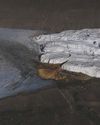
The Case of the Bleeding Glacier
It's a gory sight called Blood Falls. Ever since British geologist Thomas Griffith Taylor first noted it in 1911, it has been a mystery.
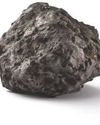
Asteroid Samples Are Said to Hold Invaluable Secrets
If Only Scientists Can Pop the Lid!
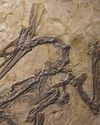
Paleontologists Embrace a New Method for Seeing Fossils within Rock
Fossil bone can be delicate. Attempts to remove it from a hard rock matrix by picking and scratching or etching with acids can be time-consuming and/or may end up obliterating that which you hope to study.

Need a Map of the Ocean Floor?
Call in the Seals!

A Step Closer to Hydrogen, the "Climate-Friendly Fuel"
As I reported last June, the world is racing to find sustainably renewable, nonpolluting sources of energy to replace our carbon-based reserves of coal, oil and gas.